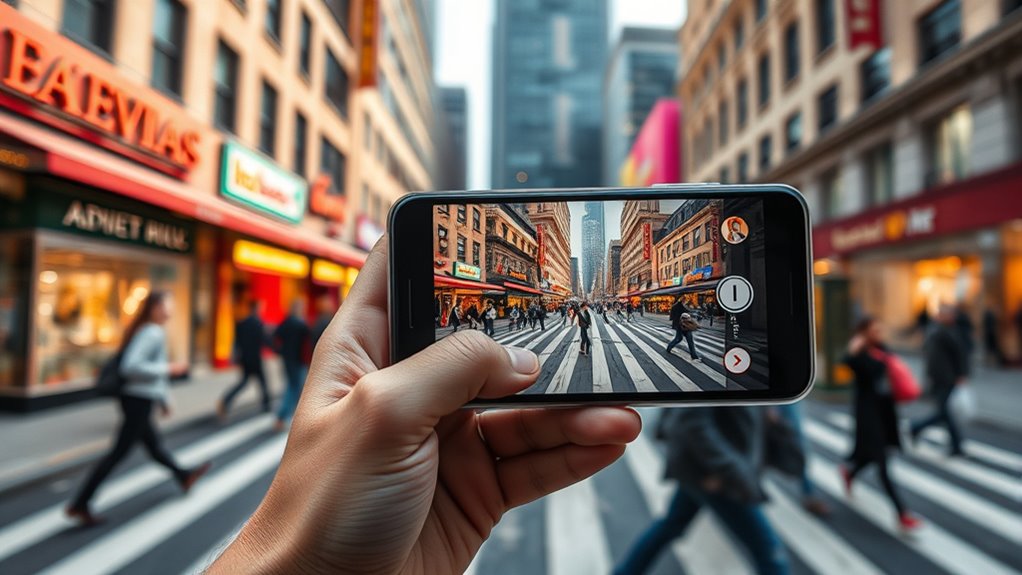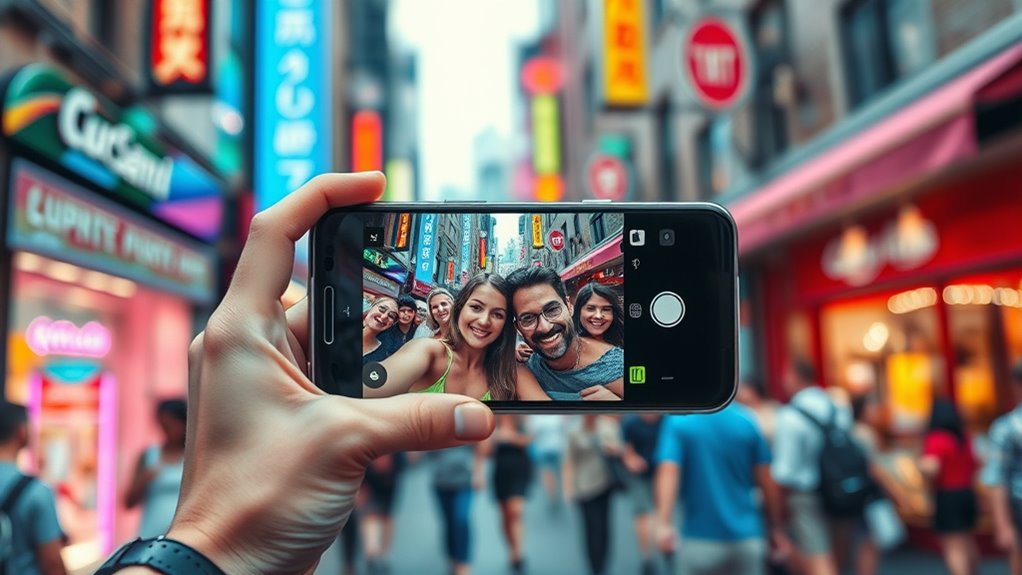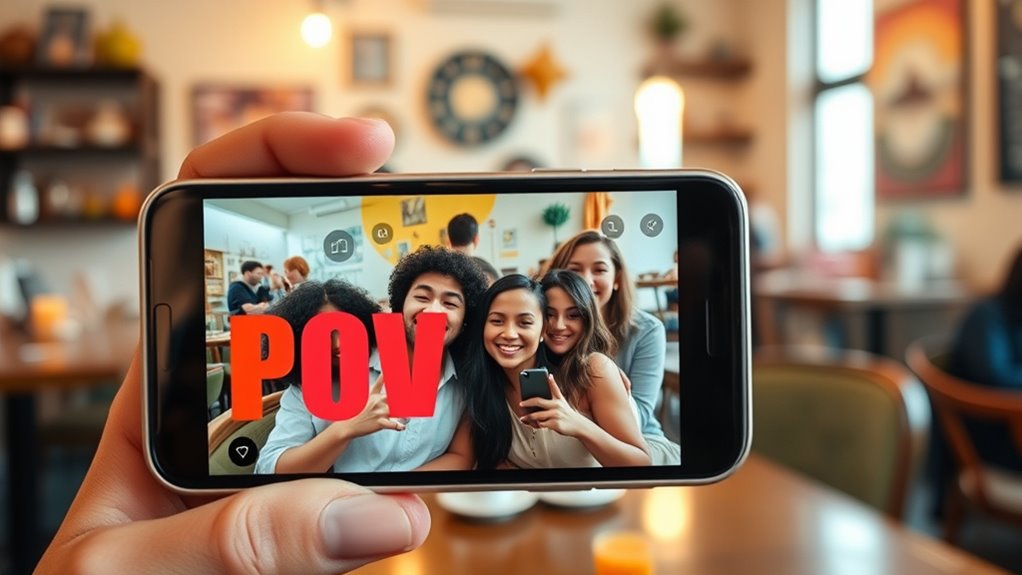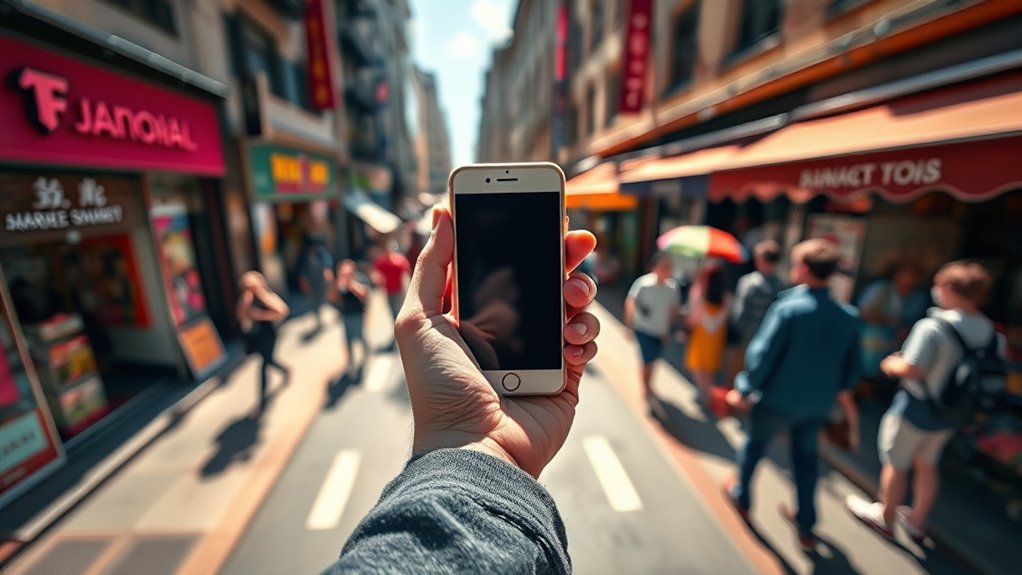POV on social media means the perspective or point of view that creators use to share their stories or experiences, helping you connect more emotionally. It can show everyday routines, funny moments, or special viewpoints through first-person shots or unique angles. Different POV styles shape how you view content, evoke emotions, or foster empathy. If you want to understand how to use or interpret POV effectively, keep exploring to discover more about its cultural significance and tips.
Key Takeaways
- POV stands for “Point of View,” indicating the perspective from which content is created or viewed.
- On social media, POV often refers to first-person or third-person viewpoints in videos and posts.
- It enhances storytelling by immersing viewers in personal experiences or unique angles.
- POV can also relate to meme formats that express opinions or humor from specific perspectives.
- Using different POVs helps creators connect emotionally and increase engagement with their audience.
The Origins and Evolution of POV in Social Media

The concept of POV in social media has roots that trace back to early digital storytelling and user-generated content. Over time, its history evolution reflects how creators began sharing personal perspectives through photos, videos, and posts, making content more relatable. As platforms grew, meme integration became a key element, allowing users to express viewpoints humorously or satirically. Memes helped popularize POV styles by providing recognizable formats that fostered community participation. This fusion of storytelling and meme culture transformed POV from simple narrative devices into dynamic tools for self-expression. Additionally, the incorporation of user-generated content in different formats has further expanded the ways in which individuals share their unique viewpoints. Today, the history evolution of POV demonstrates how social media continually adapts, blending personal perspectives with trending meme formats to keep audiences engaged and connected.
How People Use POV in Videos and Posts

People now incorporate POV into videos and posts to create more immersive and authentic content. By using different video perspectives, you allow viewers to see the situation through your eyes, making the experience feel personal and engaging. This approach invites users to step into your world, fostering a stronger connection and boosting user engagement. Whether it’s a first-person shot showing your daily routine or a perspective highlighting a specific moment, POV enhances storytelling by adding immediacy and intimacy. Creators often use this technique to evoke emotions, share experiences, or showcase products from a unique angle. As a result, viewers feel more involved, which increases interaction, comments, and shares—making POV a powerful tool for building a loyal online audience. Vetted
Different Contexts and Examples of POV Usage

You can see POV used in a variety of contexts to create different emotional impacts and storytelling effects. In social media, the narrative perspective often guides how viewers engage with content. For example, a first-person POV in a vlog makes you feel like you’re experiencing events firsthand, increasing viewer engagement. Conversely, third-person POV can offer a broader perspective, showing how others see a situation. Creators also use POV to evoke specific emotions, like humor or empathy, by placing you directly in the scene. Some posts utilize unique angles or perspectives to tell a story more vividly, drawing viewers deeper into the content. Additionally, the choice of vehicle tuning style can influence the tone and message conveyed through a POV shot, enhancing the overall storytelling. These varied contexts highlight how POV shapes storytelling, influences emotional responses, and enhances the overall impact of social media content.
The Cultural Significance of POV in Online Interactions

How does the choice of POV in online interactions shape cultural understanding and social dynamics? Your use of social media language reveals your online identity and influences how others perceive you. POV can reflect cultural values, attitudes, and biases, shaping conversations and social norms. For example, sharing content from a specific POV can foster empathy or reinforce stereotypes, affecting community perceptions. When you adopt different viewpoints, you help bridge cultural gaps or highlight differences, impacting social cohesion. The way you present your perspective influences broader cultural narratives and can challenge or uphold societal expectations. Ultimately, POV in online interactions isn’t just about individual expression—it’s a powerful tool that shapes collective understanding and cultural identity across digital spaces. Additionally, understanding various sound recording techniques can enhance the authenticity of the content you share, making your perspective even more compelling.
Tips for Understanding and Using POV Correctly

Understanding and using POV correctly requires being mindful of your intentions and the context of your message. When creating visual storytelling, choose a POV that effectively conveys your perspective and resonates with your audience. Think about how different points of view can evoke emotion or highlight specific details. To enhance audience engagement, consider switching perspectives to offer variety or to tell a more compelling story. Avoid overusing a single POV, which can make your content feel monotonous. Instead, adapt your perspective to suit the message you want to deliver. Clear and intentional use of POV helps your content feel authentic and relatable, encouraging viewers to connect on a deeper level. Mastering this skill boosts your ability to communicate effectively and hold your audience’s attention.
Frequently Asked Questions
How Did the Term “Pov” Originate on Social Media?
You might find it interesting that the term “POV” originated from the history origins of filmmaking, where it described camera angles showing a character’s perspective. On social media, it evolved as slang, with users adopting it to share personal viewpoints or immersive experiences. Over time, “POV” became popular in TikTok and Instagram videos, transforming from cinematic terminology into a versatile way to express subjective experiences online.
Can POV Be Used in Professional or Formal Contexts?
You can’t really use POV in professional or formal contexts, as it’s mainly a casual social media term. When communicating in professional language or formal communication, stick to clear, precise language without slang or abbreviations like POV. Using formal tone ensures your message is taken seriously and maintains credibility. So, save the POV for casual chats and social media, and choose more appropriate language for work or official settings.
Are There Any Common Mistakes When Using POV Online?
You should watch out for common mistakes when using POV online, like the misuse of perspective or improper framing. If you don’t clearly convey your point of view, your message might be misunderstood or seem insensitive. Avoid assuming others see things the same way or using POV to exaggerate. Always double-check that your perspective is accurate and respectful to prevent miscommunication and ensure your content resonates correctly with your audience.
How Has POV Influenced Social Media Trends and Challenges?
POV has profoundly shaped social media trends and challenges, encouraging you to create immersive reaction videos that draw viewers in. It fuels viral challenges by inviting you to share personal perspectives, making content more relatable and engaging. When you use POV effectively, you boost your chances of going viral, as audiences love authentic, firsthand experiences. This trend pushes creators to innovate and connect more deeply with their followers.
What Are Some Popular Apps or Platforms for Creating POV Content?
You can create POV content on popular apps like TikTok, Instagram, and Snapchat, which offer user engagement features and easy-to-use content creation tools. These platforms provide filters, editing options, and interactive elements that help you craft immersive videos. By leveraging their tools, you boost your engagement and make your POV videos more compelling. Whether you’re filming a day in your life or a fun challenge, these apps make content creation simple and effective.
Conclusion
Now that you understand what POV means on social media, you can better grasp its purpose and impact. For example, imagine creating a TikTok where you film from your friend’s perspective during a fun shopping trip. Using POV helps your audience see things through their eyes, making your content more engaging. By understanding and applying POV correctly, you can connect more authentically and craft stories that truly resonate with your followers.









